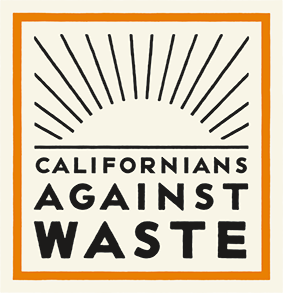Environmental Benefits of California's Bottle Bill
The California Beverage Container Recycling and Litter Reduction Act (California Bottle Bill) serves two purposes: to reduce litter pollution and to reduce reliance on virgin resources through recycling. Both are accomplished by the California Redemption Value (CRV).
By assigning a monetary value on the recycling, not trashing or littering, of a container, California's Bottle Bill prevents the landfilling or littering of more than 80%, or 17 billion, of the containers used in California annually. Compare that to states without bottle bills, where less than 25% of beverage containers are prevented from being landfilled or littered.
Prevents littering and incentivizes recycling
Because they are often consumed away from home, beverage containers and other single-use containers have a high propensity to be littered. Urban litter is a serious problem because it is the primary source of litter pollution in waterways. Urban litter, especially plastic litter, is easily transported through creeks or storm drains to the ocean. Once in the ocean, urban litter floats with ocean currents and converges in gyres, or garbage patches.
Deposit laws such as the California Bottle Bill are the most effective way to prevent the littering of single-use items. Consider that although the consumption of beverage containers in urban areas is highly prevalent, Bottle Bill containers are not a large component of urban litter, as measured by cleanup studies.
By assigning a monetary value to the recycling of a container, the CRV decreases the likelihood that it will be littered. Or if the container is littered, the CRV increases the likelihood that it will be picked up and recycled before transported into a waterway.
Reduces greenhouse gas emissions
Recycling is also one of the most cost-effective ways to reduce greenhouse gas emissions (GHG). Recycling beverage containers in California prevents the emission of more than 300,000 tons of GHG annually.
Recycling prevents GHG emissions in two ways. California’s Bottle Bill prevents the mining of virgin resources by promoting the use of recycled material. Mining operations can be extremely polluting and resource intensive. California's Bottle Bill prevents 17 billion beverage containers from entering landfills each year eliminating the methane gas emissions of these products from landfills.
Promotes extended producer responsibility
Finally, California's Bottle Bill contains ‘extended producer responsibility’ elements that encourage beverage manufacturers to design their products to be recyclable. This is accomplished through the Bottle Bill's processing fee/payment program.
Recyclers of beverage container receive a processing payment that is equal to the difference between the cost to recycle that container type and the value of the recycled product (the price it fetches in the marketplace: its scrap price). Beverage container manufacturers pay a processing fee based on container type.
Manufacturers of beverages in highly recyclable container types, like glass, pay a significantly smaller processing fee than manufacturers of beverages in difficult to recycle container types, like #3 - 7 plastic.
